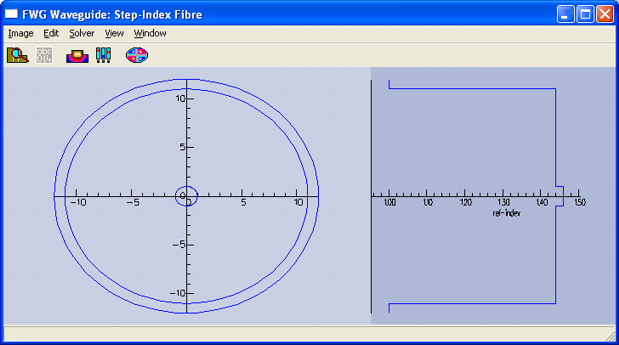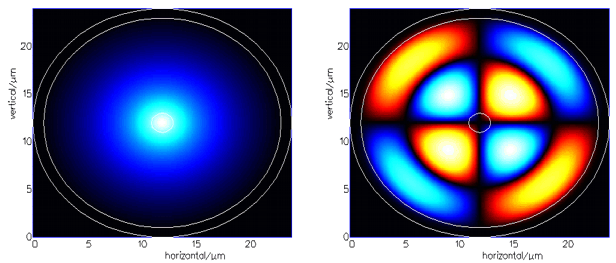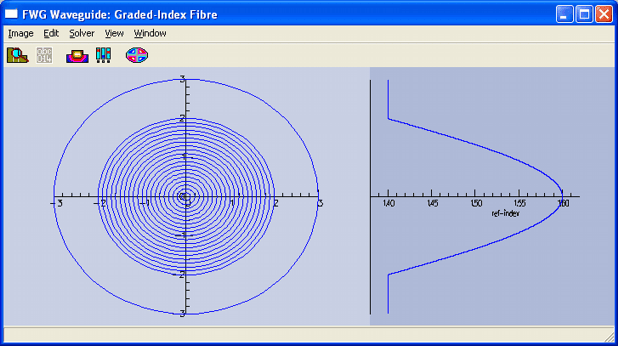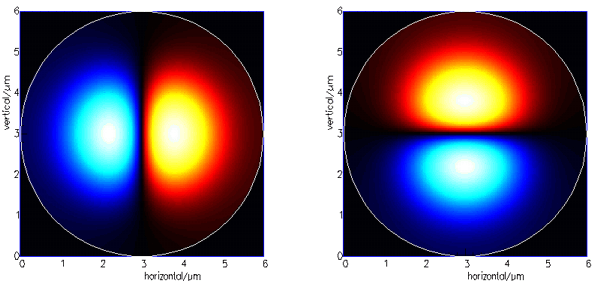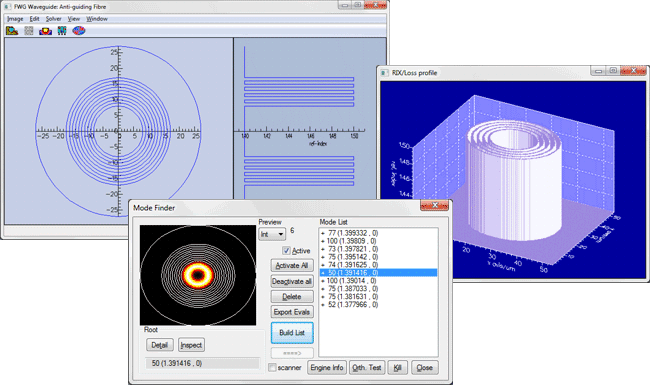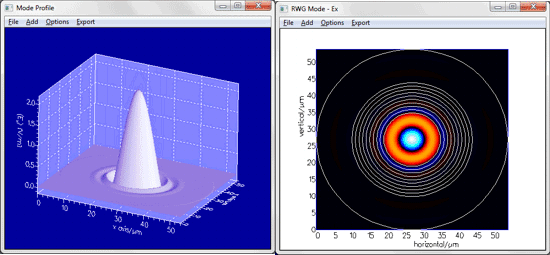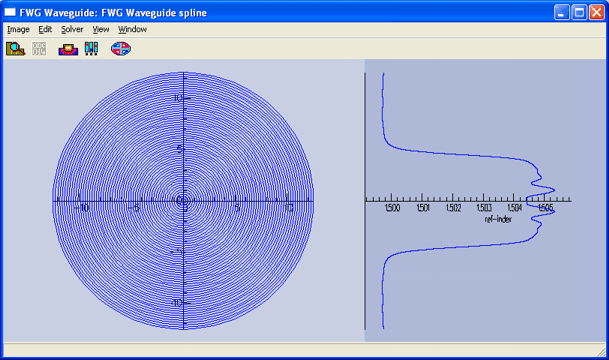FIMMWAVEA powerful waveguide mode solver |
    |
Modes of Cylindrical Optical FibresSimulation with FIMMWAVE Cylindrical Solvers softwareFIMMWAVE can calculate modes of circular optical fibres using its powerful range of cylindrical mode solvers. Modes of a step-index fibre Modes of a step-index fibreFIMMWAVE allows you to define the radial refractive index profile and calculate the modes of a step-index fibre extremely easily. You can conveniently define the fibre profile via the thickness and the refractive indices of the concentric shells. The fibre modes can be found with the GFS Solver which uses Bessel functions and the FDM Fibre Solver which relies on a finite-difference method. Both are rigorous fully vectorial solutions, dealing correctly with both low and high index contrast profiles.
Mode analysis: calculation of attenuation, dispersion, etc.For each fiber mode, FIMMWAVE will provide you with extensive mode data, including mode loss, dispersion, effective core area, measurement of the mode width (FWHM, 1/e, 1/e2), etc. A complex version of the FDM Fibre Solver is available, allowing you to model absorbing structures and plasmonic effects e.g. with metal claddings, and to calculate the associated mode losses.
Modes of a graded-index fibreAnother example of design: you can define a graded-index profile by specifying the refractive index at different radial positions. FIMMWAVE will generate a continuously varying profile with an advanced spline fitting, shown below in the case of a graded-core fibre with a uniform cladding.
Modes of an anti-guiding fibreYou can see below the profile of an anti-guiding fiber relying on a periodic arrangement of layers. The modes are confined in the low-index region at the center.
Importing a refractive index profile from a profilerFIMMWAVE can conveniently and easily import a radial refractive index profile measured with a profiler. You will find below an example of an imported profile, interpolated with a spline fitting.
More publicationsClick here to find publications that include FIMMWAVE simulations of optical fibres on Google Scholar.
|

